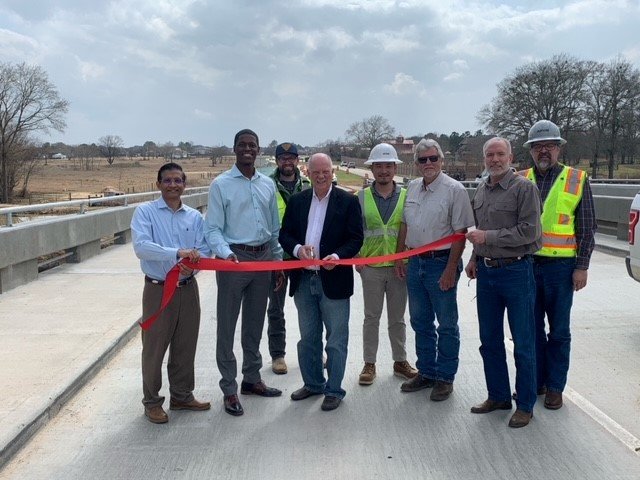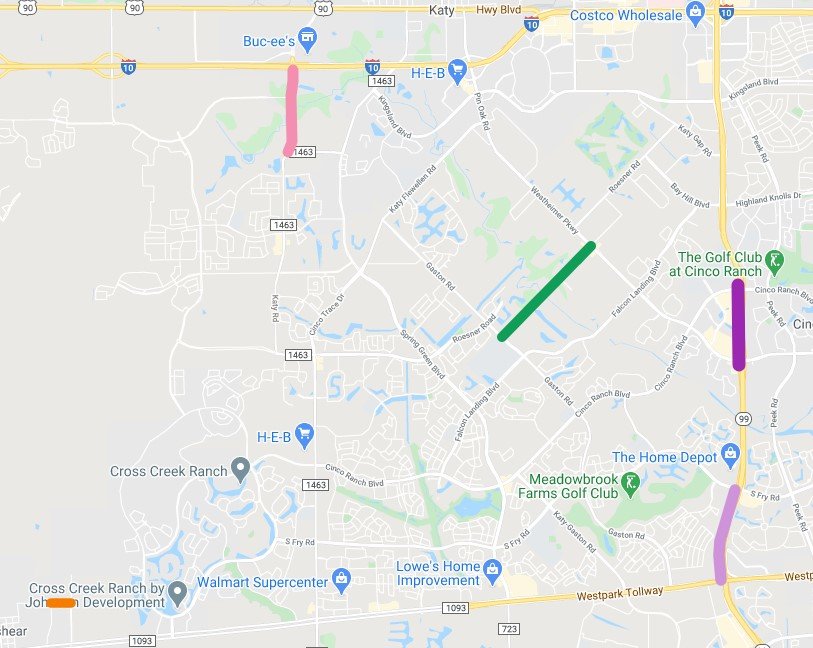Fort Bend continues transportation work while planning 2020 bond projects
Fort Bend County is developing plans to move forward with projects to be funded by bonds approved by voters in November 2020, said Assistant County Engineer Ike Akinwande. The county is already …
This item is available in full to subscribers.
Attention subscribers
To continue reading, you will need to either log in to your subscriber account, or purchase a new subscription.
If you are a current print subscriber, you can set up a free website account and connect your subscription to it by clicking here.
If you are a digital subscriber with an active, online-only subscription then you already have an account here. Just reset your password if you've not yet logged in to your account on this new site.
Otherwise, click here to view your options for subscribing.
Please log in to continue |
Fort Bend continues transportation work while planning 2020 bond projects
Fort Bend County is developing plans to move forward with projects to be funded by bonds approved by voters in November 2020, said Assistant County Engineer Ike Akinwande. The county is already working on multiple projects in the Katy area not associated with the 2020 bonds, including adding additional frontage road to The Grand Parkway near LaCenterra.
“We don’t anticipate getting to construction until the late part of this year,” Akinwande said. “It’s still under design.”
There are two sections of access road that will be added to the west side of The Grand Parkway, Akinwande said. The first begins just north of Cinco Ranch Boulevard and will take motorists just south of Westheimer Parkway. The second is further to the south and will also be on the west side of The Grand Parkway and will begin just north of S. Fry Road and will extend to the Westpark Tollway. Akinwande said the project will be paid for with $4.9 million from a 2017 bond authorization and some matching funds from the state of Texas. The project is currently under design and the county is finishing acquiring the remaining necessary right of way, he said.
Greenbusch Parkway (Road)
Greenbusch Parkway, a $7.4 million project paid for out of voter-approved 2013 mobility bonds to decrease congestion on Westheimer Parkway and Gaston Road. Construction on the project, which will create a four-lane concrete road with a new bridge over the Buffalo Bayou between Westheimer and Gaston, will begin in July. The roadway is currently a two-lane street with ditches on both sides.
Huggins Drive (Fulshear)
Huggins Drive will be extended from where it currently ends at Katy Fulshear Road straight across to Charger Way, near Fulshear High School, Akinwande said. The new two-lane road will initially just extend Huggins to the east but is eventually expected to extend all the way to FM 359 – also known as Main Street in Fulshear – on its western end. The road provides access to Huggins Elementary School and is located south of the Irene Stern Community Center where Fulshear City Council meets.
A temporary roadway is already set up that extends Patterson Road, North of Huggins, over to Charger Way, but it is hoped the Huggins Drive project will provide additional and more practical relief for congestion in the area, Akinwande said.
The $2.5 million, 3,300-feet-long project is being paid for with voter-approved 2013 mobility bonds and construction is expected to begin sometime in the summer of 2022, Akinwande said.
Cane Island Parkway
Construction of improvements to Cane Island Parkway between I-10 on the north end of the project and FM 1463 on the south end completed the week of Feb. 22, with a ribbon-cutting for the project held Feb. 25.
“All four lanes of Cane Island Parkway are officially open for traffic,” Fort Bend County Commissioner for Precinct 3 Andy Meyers said in a social media announcement. “(The county is) grateful for everyone's patience during the construction of this project, and we're thankful for all the hard work that was put into this much-needed project.”
The cost for the project came out to about $6.3 million which was allotted from mobility bonds approved in 2013 by voters, Akinwande said.
2020 Bonds
Voters approved Fort Bend County Proposition A with 75.38% of votes out of 359,924 ballots cast showing voter support for the $218.2 million bond proposition Much of that funding will be utilized to improve mobility in the county’s third precinct, which Meyers represents. Precinct 3 is the most populous in the county.
Most of the associated projects are still in the planning phase, Akinwande said. This means the county is establishing contracts with designers, geotechnical companies and other related contractors to set up the groundwork for those projects. After the planning phase is complete, the design phase will begin and will utilize a preliminary engineering report to guide designs for the roads. The new roadways’ interactions with already-in-place utilities are the other hurdle to cover before groundbreakings can occur, he said.
“The design portion of (a project) tends to be one of the shorter parts,” Akinwande said. “We can tend to condense that pretty well. The parts that really are a little more out of our control, in some ways, are utilities and the coordination that it takes with those in getting things relocated if needed.”
Still, Akinwande said he expects simpler projects related to the 2020 bond to possibly begin construction in 2023, though most will be looking at a groundbreaking in 2024 or after, though the county is working hard to make sure mobility enhancements come as early as is practicable.
A list of the 2020 bond package projects can be found at:
Meyers said the county is working hard and will have additional projects coming to Katy area drivers soon.
“We're pushing through the design and construction of multiple projects, both big and small, and will be announcing more groundbreakings and grand openings of various projects in the coming weeks,” Meyers said.
Keywords
Fort Bend County, 2020 Mobility Bonds, 2013 Mobility Bonds, Ike Akinwande









